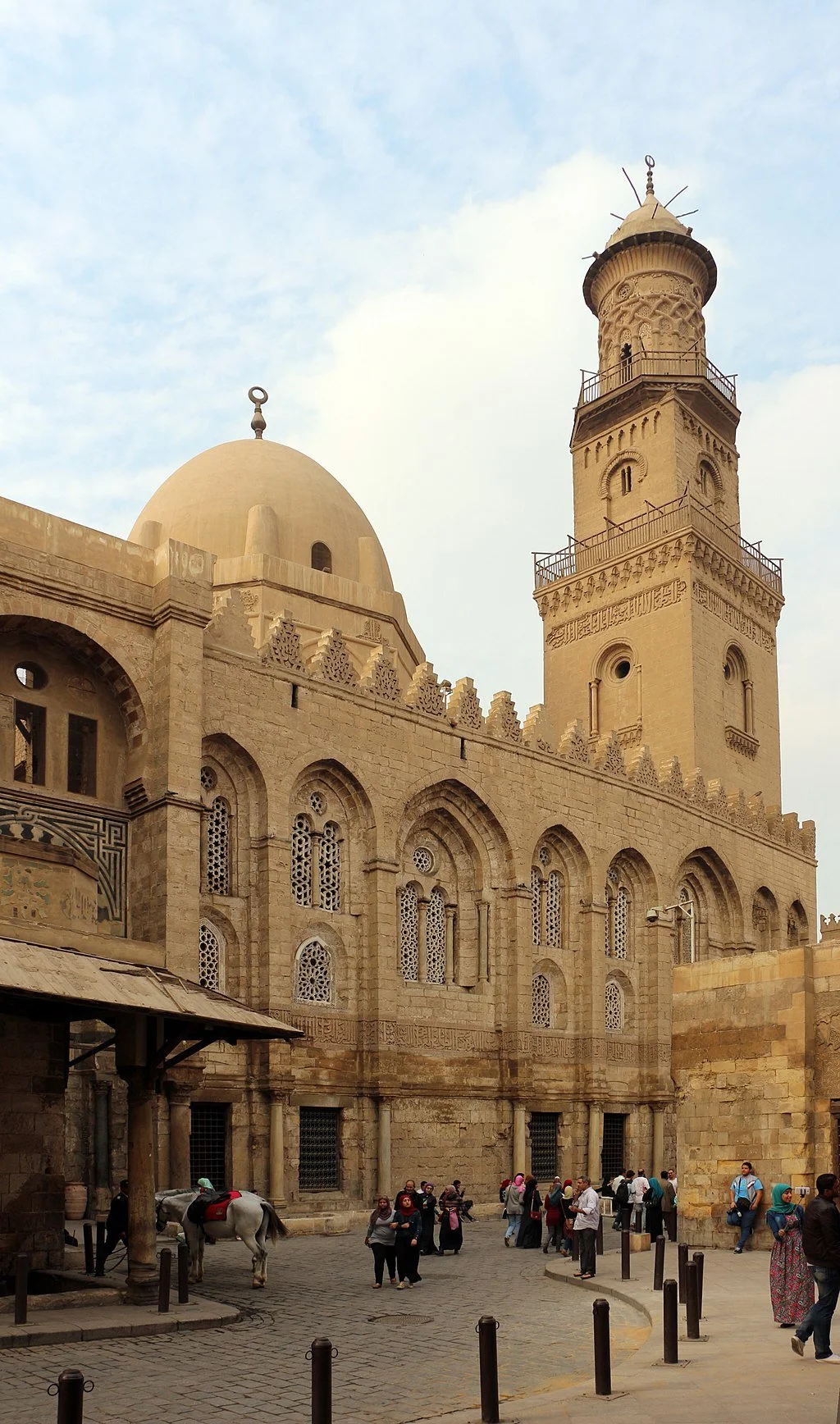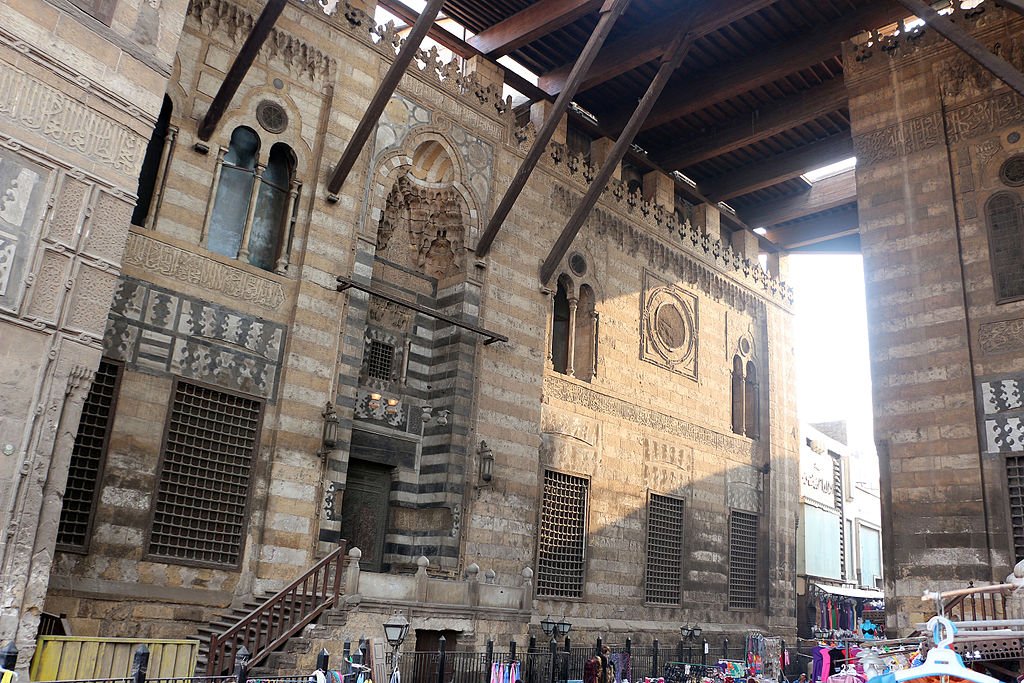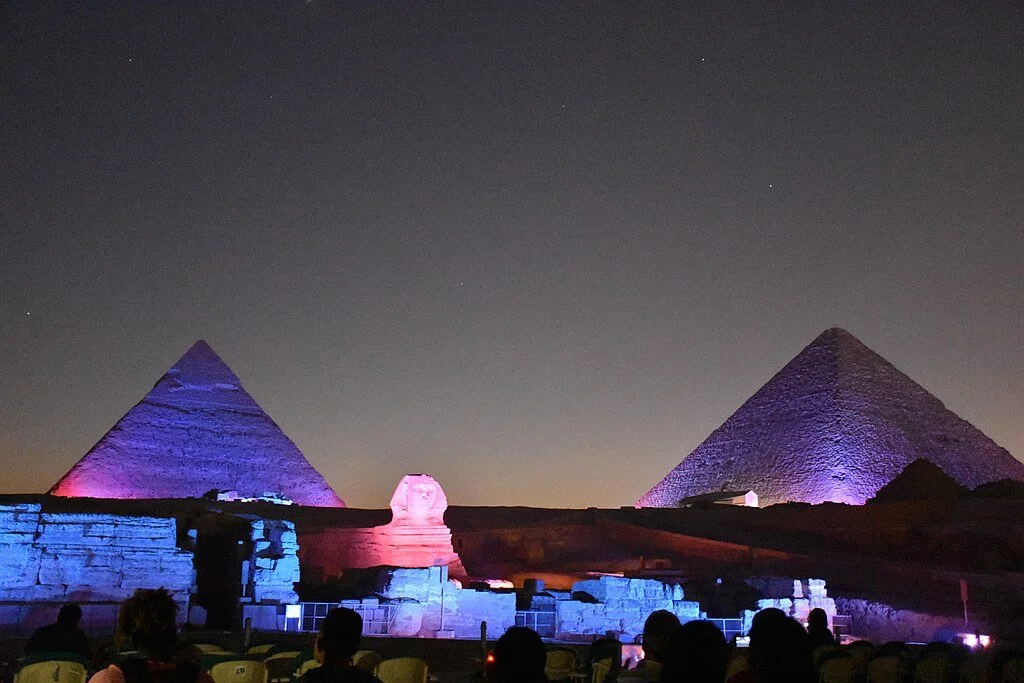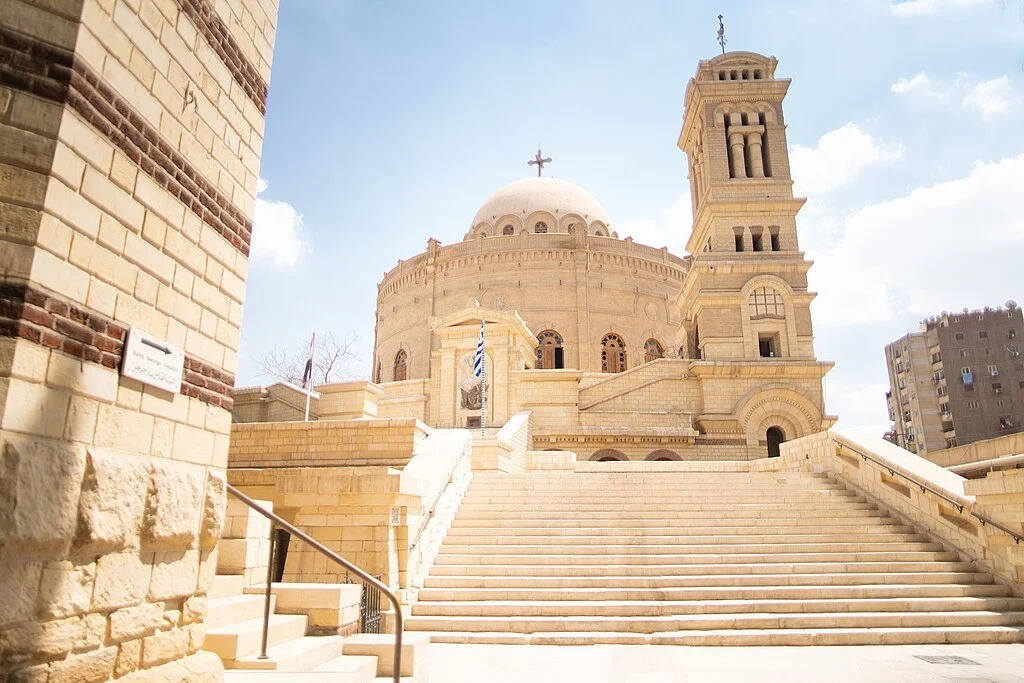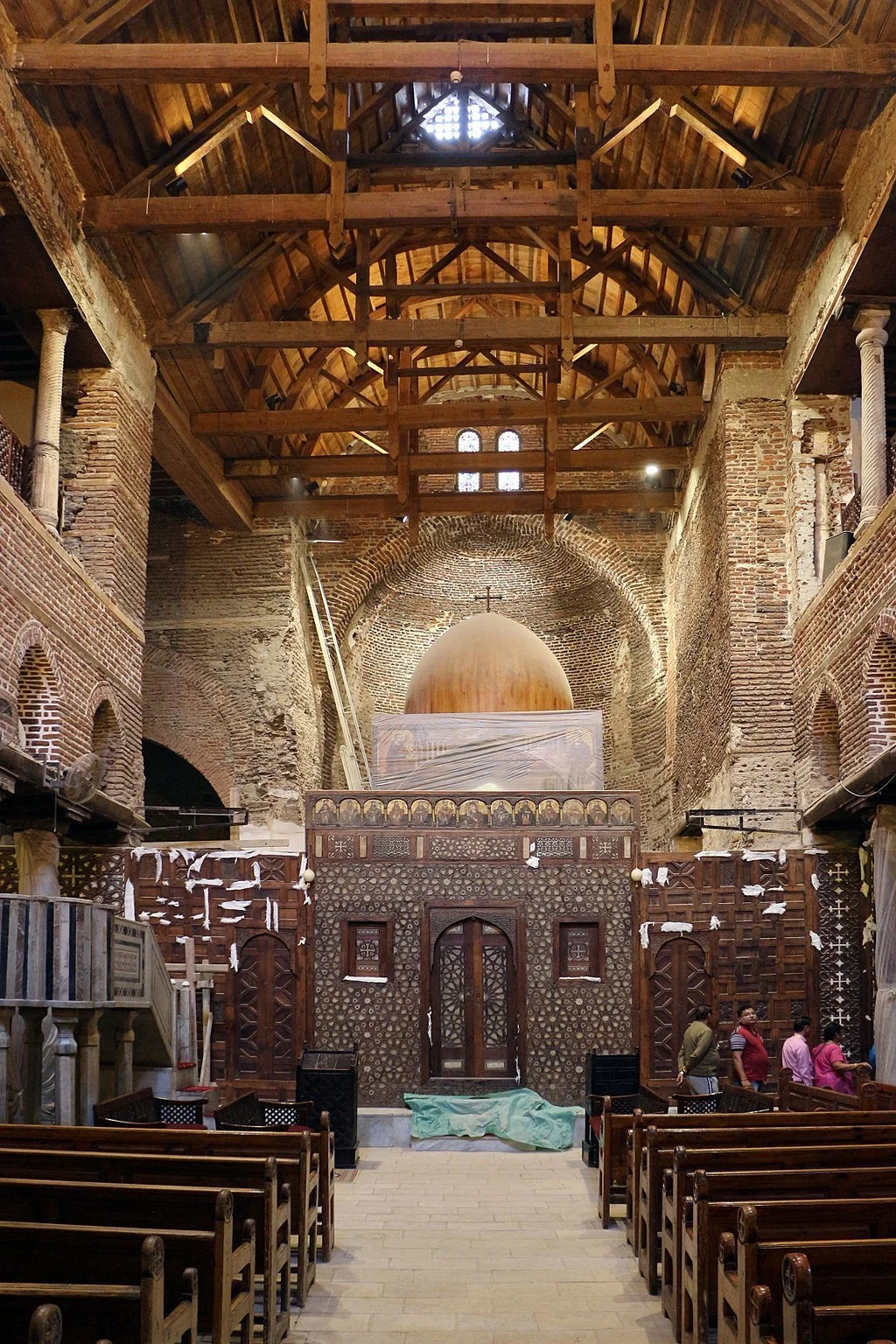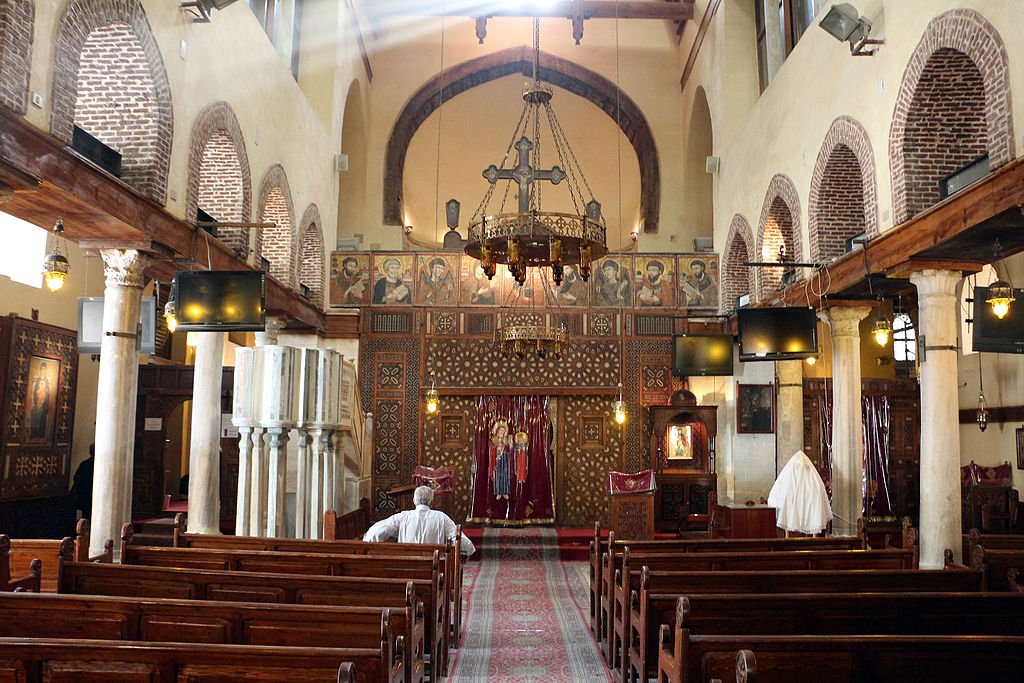How to Spend 3 Days in Cairo - A Local’s Itinerary
Cairo, and Egypt more broadly, is somewhere that immediately evokes images of ancient civilizations and a sense of adventure and wonder. This reputation is well-earned, as the city of Cairo is truly a fascinating place to visit, offering up layer upon layer of history stretching back thousands of years.
Here, in just one city, you can walk back through time, marveling at the Pharaohs and their ancient empire, touring the streets of Coptic Cairo, visiting famous Islamic sites, and of course, exploring the modern city, home to 20 million people.
And while I know that exploring our famous historical sights and monuments is likely to be your primary interest, I think getting a taste for Egypt’s modern life and culture is equally worthwhile, so the 3-day itinerary that I’ve put together below offers a nice blend of both history and modernity.
3 days is also a nice amount of time to spend here, as it gives you a chance to do much more than just rush out to the Pyramids and Egyptian Museum. Over the course of your visit, you’ll also check out the sights in Coptic Cairo, wander through the famous souk of Khan El-Khalili, tour the unbelievable Citadel of Saladin, and explore the sights in our ever-busy downtown.

Connect with Sherif, a Cairo-based local tour guide and travel consultant. Book a call with Sherif and get his expert local advice to make your trip planning seamless!
Itinerary overview
Day 1: Egyptian Museum, Downtown, Khan El-Khalili Souk, Historic and Islamic Cairo
For your first day in Egypt, I’ve planned a bit of a hybrid sightseeing day that provides a lot of nice variety. You’ll start off viewing ancient artifacts in the Egyptian museum, which will provide a lot of nice context and background for your visit to the Pyramids, which will happen tomorrow.
From the museum, I’ve suggested heading into downtown Cairo, for a look at the heart of this modern and busy 21st century city. From there, you’ll make your way into an older part of town, ending the day weaving through the streets and stalls of the labyrinthine maze that is the Khan El-Khalili Souk.
Day 2: The ancient pyramids, Grand Egyptian Museum, Sound and Light Show
Your second day in Cairo should be dedicated to what is undoubtedly the postcard image that appears in everyone’s mind when you hear the name "Egypt”: the Pyramids of Giza.
The pyramids are unquestionably spectacular, and no visit to Egypt would be complete without seeing them, so be prepared for a long (and probably exhausting) day of sightseeing. The morning will be spent seeing the pyramids and the iconic Sphinx statue, while the afternoon will see you checking out the spectacular and newly-opened Grand Egyptian Museum. In the evening, it’s time for some fun with the Sound & Light show at the pyramid plateau.
Day 3: Citadel of Saladin, Mosque-Madrasa of Sultan Hassan, Mosque of Al Rifai, Coptic Cairo, Downtown
On your final day in Cairo, you’ll continue your journey through time, visiting two parts of the city that speak to very different eras and civilizations. The morning will be spent at the Citadel of Saladin and surrounding mosques, while the afternoon will see you venturing through Coptic Cairo, home to a collection of fabulous Christian sights.
Finally, cap off your time in Cairo back in the downtown, with a very tasty dinner and evening wander.
Day 1: The Egyptian Museum, Downtown, Khan El-Khalili souk & historic Cairo
Morning
The Egyptian Museum
Grab an early breakfast at your hotel and prepare to hit the streets by about 9:00 AM.
Let's start our day with the Egyptian Museum, the oldest archaeological museum in the Middle East (inaugurated in 1902). Some of its historical gems have recently been transported to the state-of-the-art Grand Egyptian Museum (GEM), located closer to the Pyramids of Giza, some 15km away, but that doesn’t really take away from the thousands of Pharaonic riches that you’ll find at the old museum.
In fact, now that some objects were taken to the GEM, the Egyptian Museum is less cluttered and the layout is actually a bit more pleasant.
The museum has two floors, divided by historical eras. Get a map of the museum from a small kiosk right inside the building, as it will save you a lot of time trying to figure out how to grasp the whole history that fills this amazing building.
For most visitors who are casually interested in Egyptian history, expect to spend around 3 hours here (those with a keen interest in Egypt could spend days in the museum and still not see everything though).
Inside the Egyptian Museum. Photo: קובץ על יד, CC BY-SA 4.0, via Wikimedia Commons. Cropped
Afternoon
Lunch at Felfela
Once you’ve finished exploring the museum, you’ll probably be very ready for lunch. So, about a 15-minute walk away is Felfela, a fantastic restaurant that serves up delicious traditional Egyptian food.
On arrival, you’ll be pleased to see that in addition to great cuisine, Felfela also offers a unique experience. You’ll have to go to find out what I mean.
One etiquette suggestion: be sure to tip the waiter. Tipping is common in Egypt, so a tip of around 10% of your bill would be quite nice. Note that tips are always given in cash.
Explore a bit of downtown Cairo
After lunch, head further into Downtown for a tour of the area. Walk along the main street (Talaat Harb) and continue until you reach the nearby Square “Talaat Harb” or Midan Talaat Harb, named after a former leading Egyptian economist and entrepreneur.
Here, you’ll be entering an area that speaks of a multi-colonial past, and which is filled with buildings characterized by modern European architectural styles mixed with Neo Islamic ornaments, mashrabiyas (projecting windows with intricate wood latticework), and breathtaking decorations.
I think our downtown is especially interesting because it feels totally different from what most travelers expect when they come to Egypt. And that’s because this is a European-built part of the city, so the buildings, the layout, and the character feel like what they are: entirely inspired by a European aesthetic and design.
If you want a guide to the most important places in Downtown, many of the bookshops in the area will have booklets that provide little overviews on the area and its main sights.
Historic buildings on Talaat Harb Square. Photo: AhmedMosaad, CC BY-SA 4.0, via Wikimedia Commons
Some of the main sights in downtown Cairo
And no matter what, here are a few of the sights that I think are not to be missed in the area:
Cafe Groppi, the once world famous chocolatier place and until date a popular coffee shop
Cafe Riche, which once upon a time was a center for meetings of intellectual elite and a space launching careers of many known performers
The Egyptian Diplomatic Club
The St. Davies Building, designed by Welsh architect Robert William in 1910
Ataba Square
As you reach the end of downtown, you’ll come across Ataba Square or Midan Ataba. Here, you will find a big, and quite ugly, multi-story parking lot. It is in this spot that the Egyptian first opera house was built (Khedivial-Royal Opera House) in 1869, and burned to the ground in 1971.
In past times, the Ataba Square was an important heart of the city’s artistic life. Today, a few theaters still surround the area, including the National Theatre, the Avant-Gard (Al-Taliaa) theatre and the National Puppet Theatre.
Right besides the Avant-Gard theatre, there’s an amazing area that’s filled with small boutiques that sell old books. There’s an evening book market, so if that’s started up by the time you arrive, it’s a lot of fun to wander through. The Azbakeya Garden is also here, and this pleasant green space is a nice respite from the busy city.
Anyways, right here at the square, you’ll have reached the transition point between “European” and Medieval Cairo, so take a minute to reflect on what you’ve just seen, and how very different it is from the area you’re about to set foot into.
Now get ready to explore Medieval and Islamic Cairo!
Evening
Al-Hussein Mosque
From Ataba Square, you are very close to many of the magnificent Islamic sites in historic Cairo, so either make your way over there on foot (around 20 minutes), or hop in a cab for a quick drive.
I think Al-Hussein Square is the perfect point from which to begin your exploration of this area, so that's where I’d suggest starting off. Your first main stop is the famous souk (market/bazaar) of Khal El-Khalili, but before you dip into the market area, pay a visit to the extremely impressive 12th century Al-Hussein Mosque, which is right on the square.
Al-Hussein Mosque. Photo: Tarekheikal, CC BY-SA 4.0, via Wikimedia Commons
Khan El-Khalili Souk
From the mosque, you’re right beside the entranceway to Khan El-Khalili, whose stalls and shops are filled with interesting items, and it’s also a hub for artisans making traditional crafts, many of whom have their workshops here. The market was traditionally a single building, but today when we say “Khan El-Khalili” we’re really referring to the whole area, which has become a big shopping district.
Among the many items that you can purchase in the market, here are some of the more interesting ones: darabukas (goblet drums), jewelry, kilim carpets, and handcrafts. There’s also lots of junk here nowadays, so you’ll need to have a discerning eye or visit with someone who knows what they’re doing if you want to pick up better quality items.
And even if you don’t to buy anything, exploring the market is a lot of fun, as it’s always super busy and seeing all the different items and vendors at work is interesting.
Market tip: when buying anything from markets in Egypt, always be prepared to do some haggling. Even without bargaining, this area will be cheaper than many other more touristic locations throughout Egypt, but vendors will still try to get more from you than they probably should.
A shop in Khan el-Khalili. Photo: Heba otefy, CC BY-SA 4.0, via Wikimedia Commons
A stroll through historic Cairo
This entire area is a UNESCO World Heritage Site, and it’s filled with amazing Islamic architecture - with many buildings dating between the 10th and 15th centuries. So either while you shop, or after you’ve finished browsing the items, you should also be on the lookout for historic buildings, landmarks, and monuments.
A walk here is truly like journeying back in time to an Egypt of centuries ago. There are too many places to visit for me to list them all, but here are a few sights not to be missed (organized loosely in order from south to north):
Al Azhar Mosque - Constructed in the 10th century, this was the first mosque built in Cairo, which is quite the honor for a place that was once known as “the city of a thousand minarets”. Its associated university, the Al-Azhar University, is the second oldest university in the world in continuous operation.
Sultan al-Ghuri Complex - 16th century funerary complex (now a mausoleum, mosque, and madrasa) built by the second to last Mamluk Sultan
Qalawun complex - Built in the 13th century over the ruins of the Fatimid Western Palace, this is one of Islamic Cairo’s great monuments and a stellar example of Mamluk Architecture
Aqmar Mosque - a 12th century mosque with a magnificent facade
Bayt al-Suhaymi - a very grand and expansive traditional house from the 1600’s, it’s now a museum, and offers a great glimpse into the living quarters of wealthy families from that period
Al-Hakim Mosque - 11th century mosque with a huge and serene inner courtyard which was wonderfully restored in the 1980’s (after having previously fallen into complete disrepair)
Bab al-Futuh - One of the three remaining city gates, this one, known as the “Conquest Gate”, sits at the northern end of Al-Muizz street (the main street in Islamic Cairo)
Al-Azhar Mosque. Photo: Tentoila, Public domain, via Wikimedia Commons. Cropped
Walk the entire length of Al-Muizz li-Din Allah al-Fatimi Street (Al-Muizz Street)
Al-Muizz street is the main artery in this area, and it dates back to the foundation of the city, having been built in the 10th century. A north-south street, it runs for about a kilomter, from the ancient city gate of Bab al-Futuh in the north, to the gate of Bab Suqeila in the south.
If you walk along it from end to end, you’ll pass by many of the sights that I mentioned above. Be sure to also wander down the side streets and alleys that branch off from the main street though, as they also often lead to neat shops, restaurants, and monuments/landmarks.
While exploring, take time to admire your surroundings, and pay attention to the gorgeous ornamentations of the balconies, pillars, and arches all around you. In fact, those same alleys that you’ll be walking along served as the setting for many novels by the Egyptian Nobel Prize winner in literature, Naguib Mahfouz.
A stretch of al’Muizz street. Photo: Joonas Plaan from Tallinn, Estonia, CC BY 2.0, via Wikimedia Commons
Dinner
Whenever you get hungry, one of the best dining spots in the area is the “Khan El Khalili Restaurant & Naguib Mahfouz Café”, where you can have dinner and relax in amongst the history and art.
Khan El-Khalili remains vibrant until very late night hours, so you can certainly spend the entire evening here enjoying the atmosphere. Whenever you’re ready to head in for the night, just call an Uber/InDrive from the Al-Hussein Square.
Day 2: The Pyramids of Giza and Grand Egyptian Museum
Morning
Make your way to the Pyramids
Start your day early again, by 8;00 AM and head straight to the Pyramids. The distance and time to get to them will depend on where your hotel is, but for reference, its around 13 km from Tahrir Square, and should take around 30 to 45 minutes to get to Giza depending on traffic.
It’s important that you try to reach the Pyramids by 9:00 AM, before the crowds arrive. Any later and your visit will be much less pleasant.
Along those same lines, if you can help it, you should avoid visiting the pyramids on weekends, holidays, and special occasions, as the crowds will be much greater on those days.
And no matter when you visit, wear comfortable shoes as there will be a lot of walking in sand and dust, and bring a hat to protect your head from the sun.
Once you reach the Pyramids plateau, you’ll find the ticket office immediately in front of you, so purchase your entry tickets and then head in. Upon entry, you’ll immediately be “embraced” by the “warm” greetings of countless vendors trying to sell you any number of things. Among the attractions offered to you will be a camel ride.
If a camel ride doesn’t interest you, then you should just continue past them to the ticket office, and purchase your tickets for the site.
Alternatively, should you decide to take them up on this offer, try to lower the price significantly, since the camel owners will always try to get the highest fee possible. A 50% cut in price is a good conversation opener, but note that some service-providers might get very offended if you try to lower the price too much.
Visiting the Pyramids
Now, once you enter the archaeological area, it’s time to decide which pyramids to visit. All of them are accessible to visitors, but their opening days/hours are all different, so be sure to check the schedule and plan accordingly. Each pyramid entry requires an additional ticket that you can purchase nearby to the pyramid in question.
Once inside any of them, you’ll walk along a narrow corridor, passing by many chambers that you can’t enter, until you reach the main chamber where the pharaoh was buried. Here, you’ll find the stone sarcophagus in which the pharaoh was entombed.
The Great Pyramid
The Great Sphinx of Giza
From the Pyramids, make your way down to the Great Sphinx of Giza. The small corridors around the entry to this area can be quite crowded, but it’s worth the hassle to get some iconic photos next to this great statue.
After checking out the Sphinx statue, you’ll be in the area where the Sound & Light show is organized in the evenings. This is a 1-hour show that narrates the history from the time of the pyramids, along with laser image projections and lots of colorful lighting that illuminates the pyramids and the area’s other monuments.
If interested, you can try to get tickets for the evening’s performance at the nearby ticket office (or you can buy them online in advance).
Additionally, there’s also a lovely coffee shop right there where you can have an Egyptian tea with the Sphinx and Pyramids as your backdrop.
The Great Sphinx
Afternoon
Lunch at El-Dar Darak
You will have done a lot of walking this morning and spent a fair deal of time under the sun, so now it’s time to relax and grab lunch. There are a lot of nearby restaurants to choose from.
Continue down the main road from the Great Sphinx (there’s only the one road), and you’ll quickly notice tons of shops offering Papyrus, gold, perfumes, etc. This is by far the most expensive place in Egypt that you can buy any of this, so it’s best to walk on past and save that shopping for somewhere else.
Once you reach the ticket offices and leave the archaeological area behind, you’ll find a wide selection of restaurants. Among the best of them is El-Dar Darak, which serves mixed grills alongside a robust selection of vegetarian items. The food is good and the atmosphere here is lovely, so settle in and enjoy yourself.
Grand Egyptian Museum
After lunch, head over to the Grand Egyptian Museum, located just 3 km away. You can walk over from the restaurant (either along the main road or by weaving your way up through the small side streets), or call an Uber/InDrive.
After many delays, the museum has finally opened, and this state-of-the-art space is simply incredible. Covering more than 5 million square feet and holding over 100,000 artifacts from ancient Egypt, it is quite literally a treasure trove.
Even casual visitors should plan to spend a couple of hours touring the museum. Also, since it’ll be the middle of the afternoon by the time you get here - the hottest part of the day - the air conditioned grounds of the museum are a great place to hide from the midday heat.
The entranceway to the Grand Egyptian Museum. Photo: Djehouty, CC BY-SA 4.0, via Wikimedia Commons. Cropped from original.
Evening
Sound and Light show
If you’ve decided to attend the Sound & Light Show, you should head back to the Sphinx area when you finish touring the museum, as that’s where the shows take place. Regarding the timing, there are numerous consecutive shows, each in a different language, so be sure to check what time yours will be at.
Or, if you’d like to skip the show, call an Uber/InDrive and head back into downtown for the evening. You’ll probably be quite tired from the long day today, so whether you venture back out into the city for the evening or just retire to your hotel is up to you!
The pyramids and sphinx illuminate during the Sound and Light Show. Photo: MusikAnimal, CC BY-SA 3.0, via Wikimedia Commons
Day 3: Citadel of Saladin, Coptic Cairo, Downtown
Morning
Citadel of Sultan Saladin
Start your final day in Cairo with a tour of the magnificent Citadel of Sultan Saladin, a defensive fortress dating back to the 12th century when the Crusades first reached the territories of northern Africa.
To reach the Citadel, I suggest taking an Uber/InDrive, and the ride here should take about 20 minutes from Downtown. You’ll probably need 3-4 hours to thoroughly visit the Citadel and sights in the surrounding area, so plan to spend your entire morning here.
Egypt’s rulers lived within the citadel for around 700 years between the 13th and 19th centuries, and it was also the seat of government during this time. Sitting high on a hill overlooking the city, this monumental structure (one of the largest defensive fortifications in the world when it was built) held a strategic position for the defense of Cairo, and also offers incredible views of the city.
The Citadel is also a spot for the annual Citadel Festival for Music and Singing, which is usually organized around August. The two-week event brings dozens of performers - mostly Egyptian with some Arab musicians - to three stages erected across the Citadel area.
Organized by the Cairo Opera House (& Culture Ministry), the festival targets the regular Egyptians who might find it difficult (or uncomfortable) to attend artistic events at the Cairo Opera or other theaters which at times require a strict dress code or have high tickets’ fees. Locals come to the festival in large numbers with their entire family, so if you visit during this time, expect to be surrounded by multigenerational groups having a great time
And even if you're not here during the festival, you might still have some luck to find some artistic activities in the area. Ask about events happening at the Citadel’s ticket office.
Citadel of Saladin. Photo: Qnx3000, CC BY-SA 3.0, via Wikimedia Commons
Mohamed Ali Mosque
As you approach the Citadel grounds, be on the lookout for the the magnificent Mohamed Ali mosque, which is where you should begin your exploration. Also referred to as the Alabaster Mosque, it was erected during the Mohamed Ali reign (1805 – 1848) and is built in the Ottoman style, which is rather unique for a mosque in Cairo.
Enjoy the grand hall within the mosque, have some rest on the carpets, and don’t forget to lie down and look up, admiring the mosque’s ceiling. The large garden-like area next to the mosque offers a truly fantastic lookout point from where you can admire Cairo. Take in the city, and marvel at this metropolis of more than 20 million people.
The citadel area also includes numerous other building worth visiting, like a number of other lovely mosques, some palaces, and a couple of small museums. The many arabesque windows that you will encounter in some of those sites are very good spots for taking lovely photos.
The impressive Mohamed Ali Mosque. Photo: Amazingtwogirls, CC BY-SA 4.0, via Wikimedia Commons
Mosque-Madrasa of Sultan Hassan and the Mosque of Al-Rifai
But also look right in front of you, and you’ll see the impressive Mosque-Madrasa of Sultan Hassan and the Mosque of Al-Rifai. The Mosque-Madrasa was built in the middle of the 14th century, and was an architectural marvel at the time. Today, owing to its beauty and vast size, it’s still one of the most important historical monuments in Cairo.
You’ll pay to enter, but it’s very much worth the fee, and the ticket also includes entry to the nearby Al-Rifai Mosque. Al-Rifai is equally grand, but just know that it was built far more recently, toward the end of the 19th century. Designed in Neo-Mamluk style and to match the vastness and grandeur of the Mosque-Madrasa of Sultan Hassan, it’s a similarly monumental building, just a much newer one.
While you could walk to both sites from the Citadel, I think the easiest way to get there is to call and Uber. The drive will take about 10 minutes.
Mosque-Madrasa of Sultan Hassan and the Mosque of Al-Rifai. Photo: Ahmed.magdy.88, CC BY-SA 4.0, via Wikimedia Commons
The central courtyard of the Mosque-Madrasa. Photo: Mohammed Moussa, CC BY-SA 3.0, via Wikimedia Commons
The entrance to the Al-Rifai Mosque. Photo: Mohammed Moussa, CC BY-SA 3.0, via Wikimedia Commons
Al-Azhar Park - if you have time
The Citadel and mosques mentioned above are all very close to the fabulous 70-acre Al-Azahar Park, so if you find that you’ve finished touring those sites quicker than expected and feel like enjoying some greenery, make your way over to the park.
It has been recognized as one of the world’s 60 great public spaces, and within it you’ll find a pond, beautiful gardens, walking paths, expansive lawns, a few pleasant restaurants and cafés, and great city views.
An aerial view over Al-Azhar Park. Photo: Al azhar, Public domain, via Wikimedia Commons
Afternoon
Coptic Cairo
Coptic Cairo, the centre of Christianity in Old Cairo, is around a 15-20-minute drive away from the Citadel or Al-Azhar Park (respectively), so call a car and make your way over. This area is an essential place to explore for anyone interested in Egypt’s history, and it has quite a few important places to visit.
Coptic Museum
First up on your list once you reach the area should be the Coptic Museum, which closes at 5:00 pm (ticket office closes at 4pm). Be aware that many of the churches also close, usually around 4:00 PM, so just be mindful of the time.
The museum is located down a short narrow street, which is very representative of the settings in which the Christian population once lived. Inside the museum, you’ll find a collection of iconography, textiles, manuscripts, and many other historical objects testifying to the strong presence of Christianity in Egypt and the Arab world.
St. Virgin Mary church (the Hanging Church)
From the museum, head to the St. Virgin Mary church, known as the Hanging Church, just a few meters away. Built in the style of a basilica, this is the oldest such church in Egypt - dating back to the 8th century - and it was erected atop pillars, hence the ‘hanging’ part of its name.
After visiting the church, I suggest you simply enjoy a bit of directionless walking in the area, enjoying the atmosphere. You’ll probably need 2-3 hours at most, assuming you want to explore relatively thoroughly.
The Hanging Church. Photo: Radosław Botev, CC BY 3.0 PL, via Wikimedia Commons
Other big sights in Coptic Cairo
Babylon Fortress – an ancient Roman fortification constructed around 300 AD by the Emperor Diocletian, the fortress played a strategic role in protecting access to an important canal along the Nile River.
Church of St. George – A Greek Orthodox church built in the 10th century, it’s most notable for its distinctive round shape.
Saints Sergius and Bacchus Church (also known as Abu Serga Church) – One of the oldest churches in Cairo, built in the 4th century, this is where patriarchs of the Coptic Church were traditionally elected, and it’s also said to be built on the spot where Joseph, Mary, and baby Jesus rested on their arrival into Egypt.
Saint Barbara Church – Built in the 5th or 6th century, this is another of Cairo’s oldest churches, although like many of them, it has been rebuilt multiple times over the centuries.
Ben Ezra Synagogue – No longer an active synagogue, this historic structure’s founding date is unknown, but is thought to likely predate Islamic times. It’s one of the oldest synagogues in Egypt and is well worth a visit.
The Church of St. George. Photo: Московская духовная академия, CC BY-SA 2.0, via Wikimedia Commons
The interior of the Ben Ezra Synagogue. Photo: Schlanger, CC BY-SA 4.0, via Wikimedia Commons
Amr Ibn El-Aas Mosque
Before you leave Coptic Cairo, visit the Amr Ibn El-Aas Mosque, located close by. Dating back to the 7th century, this is the oldest mosque in Egypt and Africa and was one of the first places to embrace the nascent Muslim community. The mosque has significantly grown in size over the centuries.
Make sure to cover your head and take off the shoes as you enter the mosque.
Today, the mosque is fully operational, and is set up in the style of a regular mosque, with a spacious courtyard housing a beautifully decorated ablution fountain, prayer halls, and minarets. This is a great spot for architecture-lovers as well as those who enjoy exploring the multilayered cultures of a country.
Since the building has continuously expanded over the centuries, you can see Islamic influences and designs from many different eras on the mosque’s pillars and in it’s decorations.
For those of you interested in mythology, here are two interesting stories: there are two pillars in the mosque that serve as lie detectors. It is believed that a person telling a lie won’t be able to cross in between those pillars.
Another myth says that if a young woman drinks water from the mosque’s well, she will soon be married. You’ll have to see for yourself if either story is true!
Amr Ibn El-Aas Mosque from the inside. Photo: Mahmoud Mostafa Ashour, CC BY-SA 4.0, via Wikimedia Commons
Evening
Dinner and exploring downtown Cairo
When you’re ready to leave the mosque and Coptic Cairo behind, it’s time to return to the Downtown area. Instead of taking a cab, you should hop on the metro. From the nearby ‘Mar Guirguis’ station, it will take about 15 mins to get back to Downtown Cairo.
Take the metro to Sadat Station, which is the one underneath Tahrir Square. Tickets can be purchased at the metro station (make sure you have cash on you).
It should be dinnertime by the time you arrive to Downtown, so here are two options for a great meal: Estoril and the Greek Club (in Arabic: Nadi Younani). Both are cozy dining spots that serve Egyptian and international cuisines as well as alcoholic drinks.
Though not on the map of the regular touristic tours, these restaurants are often frequented by expats and younger, more cosmopolitan locals.
Once you reach Tahrir, ask someone to direct you to either restaurant, as both places are well-known to locals.
Downtown Cairo
Overnight in Cairo







